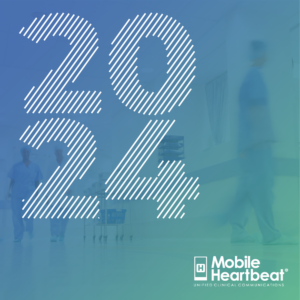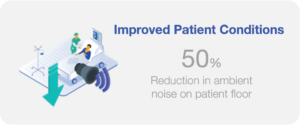The clinical communication industry has been undergoing some significant changes since the start of the pandemic. Healthcare organizations’ responses to covid have demonstrated just how important a unified and reliable collaboration tool is—from scaling to temporary field hospitals to coordinating vaccine rollouts, team-centric platforms built for clinicians have been a crucial part of the technology stack.
But the next generation of clinical communication software is rapidly approaching, and healthcare organizations need to be prepared for the new capabilities and implementations this technology will bring.
Our COO, Mike Detjen, recently sat down with Healthcare IT News to discuss the future of clinical communication functionality, and he identified four pillars that define and support our vision for this future.
1. Cloud-Native Delivery
Cloud technology is quickly becoming an appealing solution to healthcare organizations’ data storage conundrums, but the ease of deployment and low startup costs make it a prime target for widely installed mobile technology, such as a collaborative application. Couple cloud-native deployment capability with the backing of Microsoft, and you have a highly scalable communication solution that you can install with the tap of a button.
2. Leveraging Existing Investments
We have to take a complementary approach to healthcare infrastructure. Interoperability is achievable through thoughtful integrations that support and enable existing investments like EHR, telephony and nurse call. With a collaborative platform designed to be a technological capstone, your organization can close workflow loops to create a unified environment and reduce fragmentation.
3. Applying Data to Uplift Workflows
Our industry has made data analytics a popular phrase, and there are more metrics to track within a hospital now than ever before. But how are healthcare leaders consuming this data and using the insights to improve? Our partnership with Microsoft empowers us with the unique capabilities and resources of the Cloud for Healthcare, including cutting edge and innovative applications for workflow data to optimize clinical operations.
4. Connecting the Care Continuum
The previous three pillars enable healthcare organizations to do something almost unheard of in our industry: unify the entire enterprise, from major hospitals all the way down through ancillary facilities and outpatient centers. When your multidisciplinary care team can follow a single patient from admit, through discharge and follow-up appointments at outpatient locations, not only are staff able to provide more holistic care, but the patient can enjoy a more seamless care experience.
As we close out 2021, the future is closer than ever. Get the full scoop by listening to the podcast, or contact our clinical mobility team for more information about the Mobile Heartbeat vision for next year and beyond.




